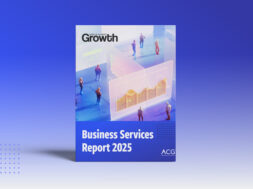What’s Ahead for the Leveraged Loan Market
The long-term effect of coronavirus on the leveraged loan market will depend on risks, the pandemic's extent and the government's response.

This article is sponsored by Pepper Hamilton LLP.
This story originally appeared in the March/April 2020 print edition of Middle Market Growth magazine. Read the full issue in the archive.
As the coronavirus pandemic upends the economy, the financial health of the leveraged loan market has been impacted. The long-term effect of the pandemic on the leveraged loan market will depend on inherent market risks, the extent of the pandemic and the government’s response to the crisis.
State of the Leveraged Loan Market
As of late last year, the total of outstanding leveraged loans was estimated to be just under $2 trillion, with $1.3 trillion held by institutional investors, according to testimony at an SEC Committee hearing last September. The average leveraged transaction has total leverage of 5.5 times EBITDA, which is more disciplined than before the 2007-2008 financial crisis. In the middle market, banks continue to face increased competition from nonbank lenders that do not face the same regulatory pressures. This competitive environment—particularly in the sponsored leveraged buyout space—has forced banks to make accommodations on pricing and covenants to maintain market share. Looser covenants, including covenant-lite loans and less stringent underwriting standards driven by increased competition and migration of sponsored-deal terms from the large-cap markets to the middle market, had led to greater market risk. In addition, EBITDA continues to be defined in expansive ways through the use of EBITDA add-backs, resulting in the possibility that leverage is higher than what is reported.
Impact of the Coronavirus Pandemic
In the near term, the pandemic has increased the use of revolver facilities for cash-strapped companies or, where a company has no immediate use of the funds, to make withdrawals out of an abundance of caution. Lenders allowed $215 billion to be drawn down between March 5, 2020 and April 9, 2020, as tracked by S&P’s Leveraged Commentary & Data service. During this period, companies also deferred or modified cash payments to conserve cash.
The longer-term impact of the pandemic on the leveraged loan market is uncertain. It will be determined by the extent of the pandemic and the government’s response. Without external relief, or long-term, meaningful access to liquidity, companies will likely default on payment obligations and miss financial covenants. Fitch Ratings has revised its default forecast as of March 27 for U.S. leveraged loans for 2020 to 5%-6%, up from 3% previously forecast. This equates to $80 billion, surpassing the previous high of $78 billion in 2009. Defaults are expected to be highest in the energy, nonfood retail, restaurant, and travel and leisure industries.
Another concern is the ability of companies to refinance loan obligations upon maturity. According to S&P’s LCD, March 2020 was the first month since December 2008 that the primary syndicated loan market did not have any new issuances. As reported by Refinitiv LPC, new money lending in middle-market sponsor-backed deals in the syndicated loan market during Q1 2020 was $7.6 billion, down 15% from Q4 2019 and 13% year over year. The slowdown in new lending could be a bellwether for refinancing opportunities. Some lenders have signaled a willingness to work with companies on waivers, payment deferrals and forbearances. Companies should proactively reach out to their lenders when liquidity challenges arise or in anticipation of refinancing.

Deborah J. Enea is a partner in the Financial Services Practice at Pepper Hamilton LLP.

Justin A. Wood is a partner in the Finance & Restructuring Practice at Troutman Sanders. Effective July 1, Pepper Hamilton will combine with Troutman Sanders to become Troutman Pepper Hamilton Sanders LLP (Troutman Pepper).


